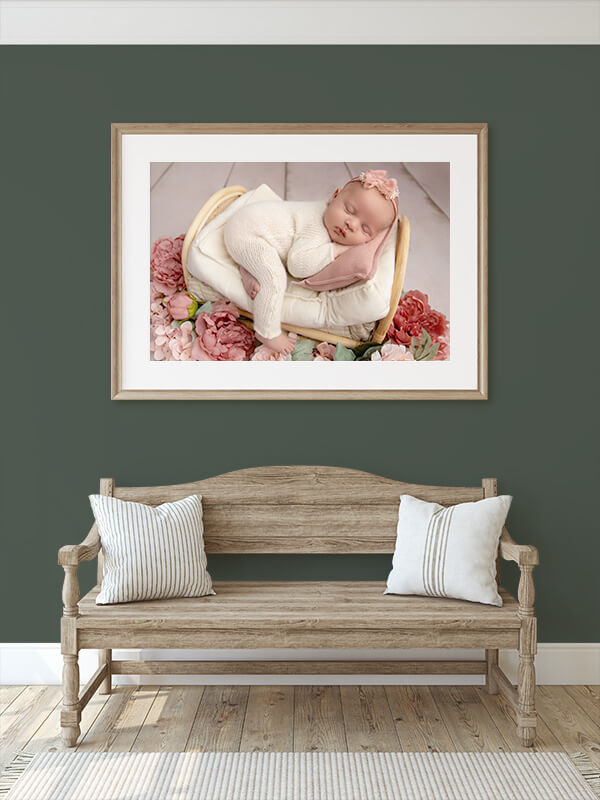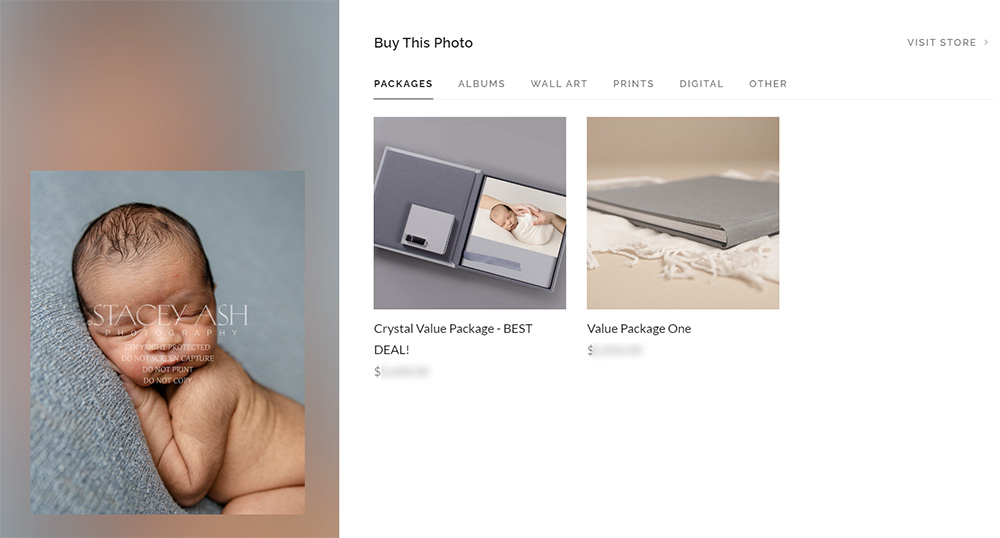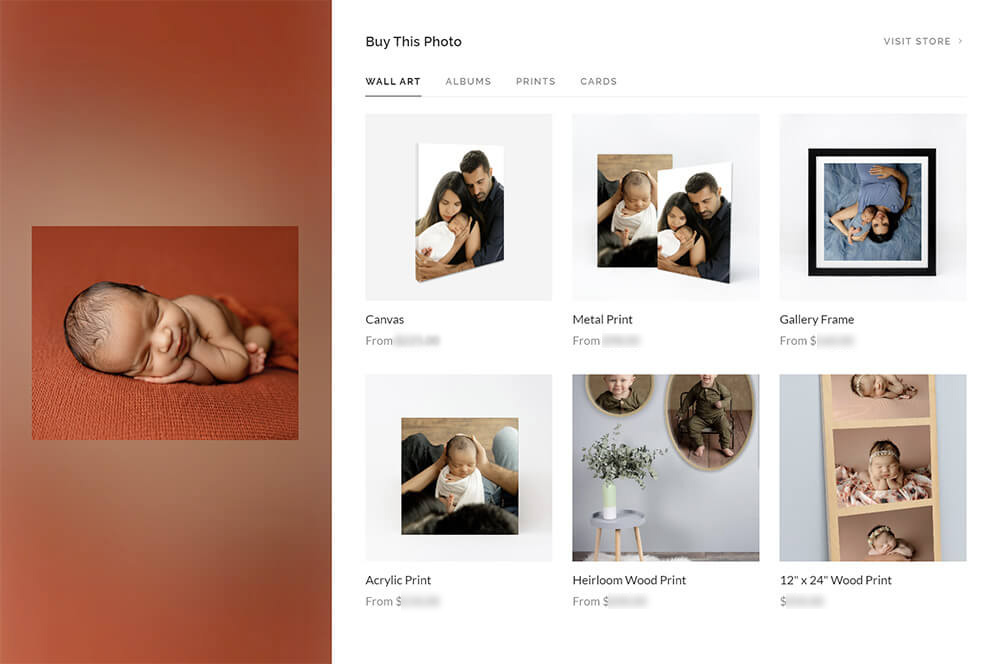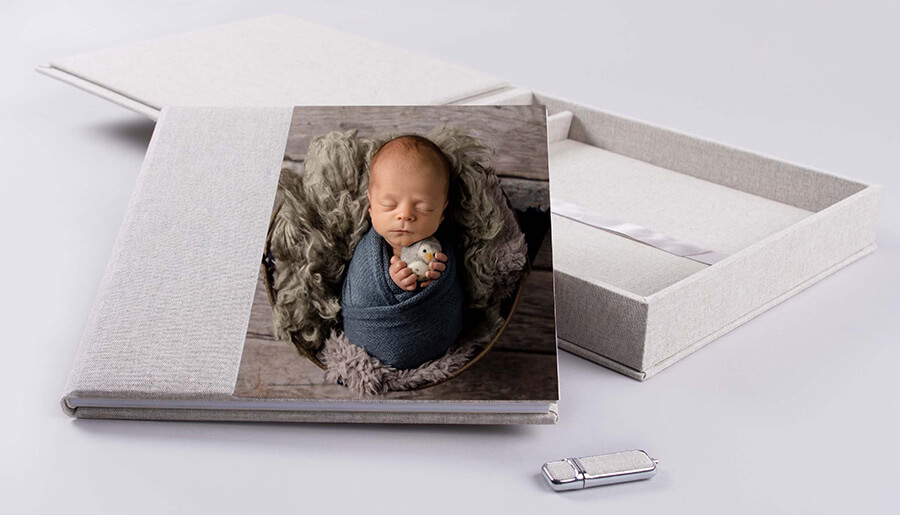Your struggle with pricing is no secret! I know you have changed your strucure and pricing many times. You can’t decide which method works best. How do I know this? Because I have done the exact same thing and STILL find myself tweaking my pricing every year.

Success Stories
We’ve all heard the stories. Photographers making bank! But, one day it’s someone swearing by in-person sales. The next day, someone else is sharing their latest amazing sale doing online galleries. You waver between the two and don’t know which way to go!

Let’s break it down and look at the pros and cons of both in-person sales and online galleries. My hope is that after reading this, you will have a better idea of how you should structure your own pricing.
What are the different approaches?
There are many approaches for photography pricing. This post is mostly going to cover in-person sales, also known as IPS, and online galleries. Here are the three most popular pricing structures amongst photographers.
All Inclusive:
The client pays the full amount before the session. In most cases, photographers offer a few package options. Then, the client picks one and pays up front. After the session, the photographer either edits and delivers the images or allows the client to select a set number of images that are included in their chosen package. This method is the most commonly used approach by brand new photographers. Most often, all inclusive pricing is done through online galleries, but not always. This is the least profitable method of pricing.
In-Person Sales (IPS):
There are many educators on this subject. You can join mentorship programs to teach you how to sell your images in person. It’s made out to be this really secretive style of selling, but ultimately it just means you are meeting with the client to make the sale. First, the photographer and client have a consultation meeting to plan out the session and go over the pricing. To proceed, the client pays a fee to cover the session. The session takes place. After the images are culled and edited (either fully or lightly for proofs), the photographer and the client meet to review the images and make the final purchase. Most often, photograhpers who do in-person sales, will sell products like albums and wall art, but digital files can also be sold. Once COVID hit, ordering appointments through Zoom became popular. Some have stuck with the virtual ordering appointments.
Online Galleries:
A lot of people mistakingly call this “shoot and burn”. It seems IPS photographers especially like to call it this. But, there is a difference between “shoot and burn” and online selling. “Shoot and burn” refers to someone taking the images and handing them over to the client. They are not culled or edited. Photographers who use online galleries do cull and lightly edit the images. The most popular approach is to do proofing galleries.
So, here’s how it works. The client pays a fee to cover the session and the session takes place, just like with in-person sales. Then, the images are cropped and lightly edited with a preset. The photographer uploads the photos using an online gallery system like Pixieset. The images are low resolution and heavily watermarked. The client selects their products (either tangible items or digital packages) and checks out through the online store. There is no sales meeting. The photographer does the final edits on the chosen images and delivers products and digitals to the client.

PROS AND CONS
In-Person Sales (IPS)
PROS:
- seeing client reactions
- less chance of images being screenshot or “stolen” (this can still happen with virtual meetings)
- typically higher sales than all-inclusive and some online sales
- clients tend to purchase physical products
- photographer can guide the client through selecting images and products
CONS:
- the most time intensive of all the selling methods
- photographer must be good with making suggestions (or selling)
- must be good with in-person confrontation or push-back regarding the cost
- photographer must have samples of products to show clients
- in a digital world, potential clients may not want an IPS session
- strict deadline to be ready for the sales meeting
Non-IPS (online galleries):
PROS:
- efficient use of photographer’s time
- non-salesy, convenient for photographers who are more introverted
- client communication is done virtually or over the phone
- convenient for clients, especially new parents who would rather not leave home
- profitable if priced properly
- flexible deadline for delivering sales gallery
CONS:
- photographer does not get to see client’s reaction upon viewing the images
- potential for clients to screenshot images
- clients tend to purchase more digital files and fewer tangible products
- photographer has little influence on what images or products are purchased
What method do I use? In-person sales or Non-IPS?
I am a busy parent, as I am sure many of you can relate. Photography takes up a lot of my time. The last thing I need is two extra meetings in my week (IPS consultation and sales meeting)! So, as of right now I choose not to do in-person sales. Now, that might not always be the case. Never say never, right?! My boys will one day be grown and AI may force us to change how we run our businesses. So, who knows, maybe 5 or 10 years from now I will make the switch to IPS, but right now I have no desire to do so and my life is too busy for it.
However, every year I do have a few IPS sessions. Most of the time it’s becasue the client has requested it or there is a language barrier in which e-mail is more challenging for selling. What I can tell you is that none of my IPS sales have yielded higher sales than my online galleries. In fact, I recently got a $980 tip from an online client!
Where I Started
When I first began my photography career I was doing all inclusive with one flat rate for all images. It didn’t take long before I increased my pricing and created different packages. After hiring Kyle Goldie as my business coach, I made the switch to a session fee model. I immediately noticed an increase in my sales. With an all inclusive structure, clients force themselves to narrow down their photo selections to go with the package they have paid for. However, with the session fee model, there is no pre-selected pacakge. So, when clients see their images for the first time they can choose a package to match all of their favorites. They end up purchasing a bigger, more expensive pacakge at this point.
How it works
My website, which is the Chicago template, and e-mail copyrighting is set up to sell itself. I communicate with potential clients through e-mail using the templates I got from Kyle. Upon booking, the client pays a session fee. Then, the session takes place. After I cull and lightly edit the images, I upload them to Pixieset and send a sales e-mail to the client. I have their online store set-up with bundle packages, digital collections, albums, wall art, and prints. The client “shops” and checks out. I then do final edits and deliver the digitals or products to the client. There is no sales meeting.

Profitability
Once I hired Kyle and began the session fee approach, my sales took off. I doubled my revenue two years in a row and have consistently been grossing over $100k. I am even on track to hit $200k! Don’t let anyone tell you that in-person sales is the only profitable way to sell your art! It’s all about properly setting up your online store and communication with the client (both webiste SEO and e-mail). I highly reccomend you get Kyle‘s help to turn leads into bookings!
Are you wondering how to know what to charge? Yes, it’s scary and a bit overwhelming. I know there are photographers around you charging way more and way less than you. I am aware of all of the products out there and the many different labs you can purchase from. But, really it’s not rocket science. You can jump in slowly, but you first have to run your cost of doing business (CODB). This is a must. It will tell you how much you need to make from each client in order to cover expenses and pay yourself a livable wage.
Once you get that $ number from the CODB calculatore, it’s non-negotiable. That’s your LOWEST package (or maybe your only one if you are all-inclusive with no packages). You don’t let anyone bargain with you, you don’t offer discounts, or lower it in hopes that you can make enough anyway. NOPE – that is your price, go with it!
Decision Making: In-Person Sales or Online Sales
Basically, if you wish to make a profitable living doing photography, you have some important choices to make. You can either get more clients, or you can increase your average sale. Regardless of the path you choose, you must be priced right.
In-Person Sales is the best way to increase your average sale amount without raising your prices.
Online Sales is the best way to save time and work efficiently (and time=money). It also allows you to take on more clients.
With either of these methods, I highly recommend you charge a fee upfront to cover the session. You can call it a creative fee, a session fee, or a retainer fee. After the session is when you make the sale. This has been proven many times over to be more profitable than all-inclusive pricing where the client pays the full amount before the session.
Do you need a newborn photography coach? I would love to help you pefect your newborn posing. Read HERE to learn more about how I can help you!
